Ingenious English Muffin Bread — Made In a Microwave
Sometimes the best things in life happen by complete accident.
Take my discovery of this amazing recipe for “English Muffin Bread” that’s “baked” in your microwave in mere minutes. I kid you not.
A month ago, Rebecca from New Hampshire, emailed me out of the blue, frantically searching for this recipe by cookbook author Lora Brody. She’d made it before, loved it, but couldn’t for the life of her lay her hands on it again. So, she did what we all do: She Google’d it. The search engine returned a link to where she could find it: FoodGal.com. Trouble is I not only didn’t have that recipe on my blog, but I’d never even heard of it. Go figure.
After she and I exchanged perplexed emails, Rebecca eventually found the recipe again in Brody’s cookbook, “The New England Table” (Chronicle Books), and sent me a copy. It’s adapted from a James Beard recipe.
And it’s a marvel.
I’ve made English muffins from scratch before. They’re glorious when they’re home-made, but they are quite laborious.
This English muffin loaf is far, far easier. Sure, you still have to let the dough rise. But since it’s a loaf, you don’t have to shape individual rounds to griddle them. You also don’t have to turn on the stove and heat up the house in the summer if you want fresh bread. Is that a godsend or what?
A simple dough of all-purpose and whole wheat flour is stirred together with a little cornmeal, sugar, salt and yeast. Allow it to proof for an hour. Then, you punch it down before stirring in a pinch of baking soda mixed with warm water. Let it rise again for half an hour, then it’s ready to go into your microwave for all of six and a half minutes.
When it emerges, it may look pale and undone, but cut a slice and toast it to be rewarded. It’s bread with crisp parts, chewy parts and airy parts — a cornucopia of pleasing textures.
It doesn’t have the developed flavor of English muffins made with a starter. But I decided to experiment with a second batch by allowing the dough to rise slowly overnight in the refrigerator. The next day, I allowed it to come to room temperature for about two hours, before punching it down, then adding the baking soda mixture. Because the dough was so cold, you may have to nuke it for just a few second longer in the microwave.
And the taste in this version? When toasted with butter, it did have a slightly more fermented bread flavor.
So, if you have the extra time, I recommend letting the dough rest overnight in the fridge. If not, go with the standard method for a still very satisfying result.
From now on, if anyone ever Googles the recipe, it really will be found on my blog.
English Muffin Bread
(Makes 1 loaf)
2 cups (10 ounces) unbleached all-purpose flour
½ cup (2.5 ounces) whole-wheat flour
1 tablespoon cornmeal
1 ½ teaspoons granulated sugar
1 1/2 teaspoons active dry yeast
1 teaspoon salt
1 ½ cups (12 ounces) buttermilk, heated to 110 degrees
1/8 teaspoon baking soda
Combine 1 cup of the all-purpose flour with the whole wheat flour, cornmeal, sugar, yeast, and salt in a medium mixing bowl and whisk lightly until combined. Slowly add the warm buttermilk while stirring with a wooden spoon until smooth. Add the remaining 1 cup of all-purpose flour and continue beating by hand until the batter is stiff and just slightly sticky.
Scrape the dough into another oiled, medium sized bowl. Cover with plastic wrap and set in a warm place until doubled in bulk, about 1 hour. With a wooden spoon, stir down the batter to release the gas and deflate the dough. Dissolve the baking soda in 1 tablespoon of warm water and add this solution to the batter. Use the wooden spoon to mix until distributed evenly. Butter a 6-cup microwave-safe loaf pan and put the batter in the pan. Cover it with plastic wrap and set aside again in a warm place until doubled in bulk, about 30 minutes.
Place the loaf pan in the microwave and cook the dough on full power (high) for 6 ½ minutes. The bread will still be doughy, full of holes, and raw looking; this is fine. Cool the dough in the pan for 5 minutes, then turn it out onto a wire rack. Let cool completely.
To serve, cut as many slices as desired and toast them until crisp and golden brown.
Note: Brody says that powdered buttermilk may be substituted. Add the powder with the other dry ingredients in the first step. Then add warmed water in place of milk.
Note: For a more developed flavor, follow the recipe through the step of scraping the dough into another oiled, medium sized bowl. Cover with plastic wrap and place in the refrigerator overnight. The next day, allow the dough to come to room temperature for about 2 hours before stirring in the baking soda-water mixture. Then, follow the remaining steps in the recipe. If the dough is still a little cool before going into the microwave, you might have to add a few more seconds of cooking time.
Adapted from a recipe by Lora Brody in “The New England Table”
More Ingenius Cooking Techniques: Smoking a Meat Loaf
And: An Impossibly Flaky Crust That’s Not Made with Cold Butter
And: Chinese Steamed Buns Made From Refrigerated Biscuit Dough

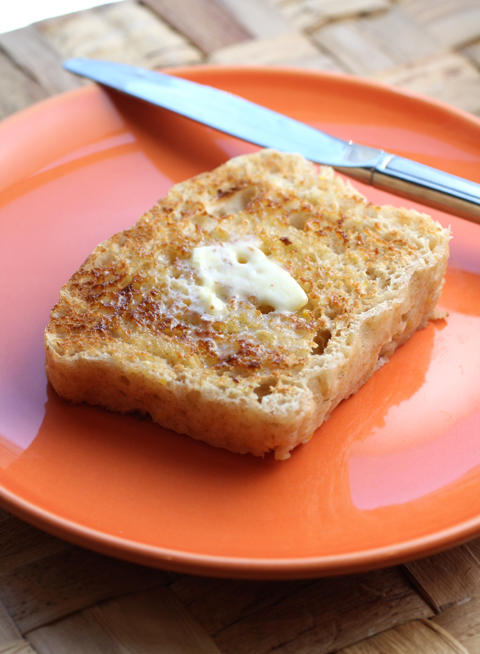
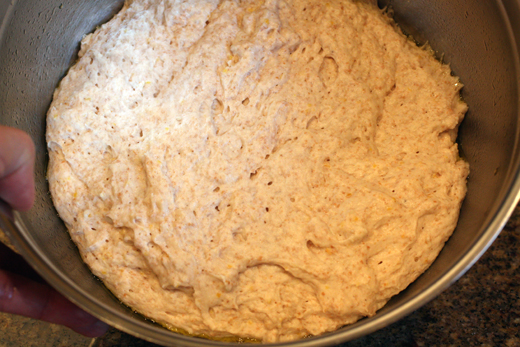
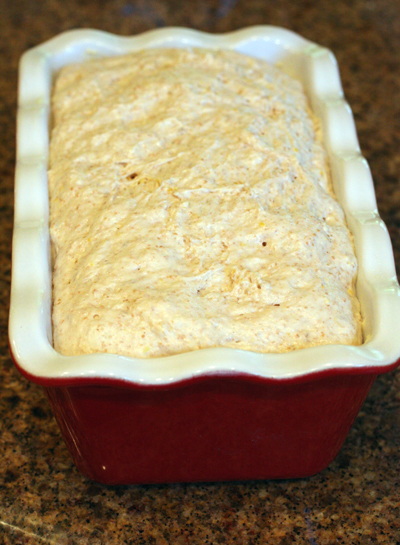
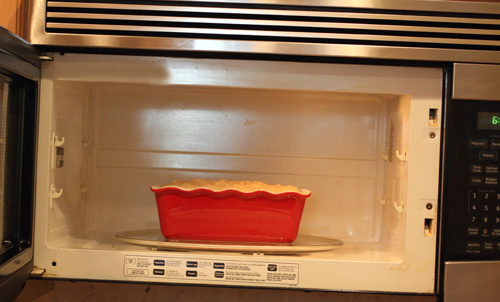
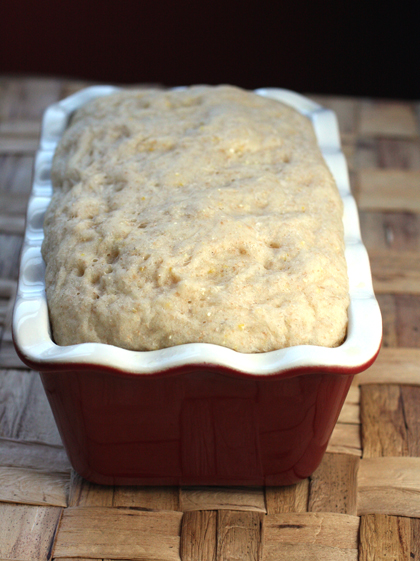
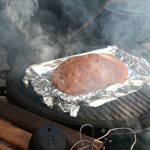
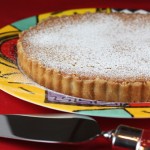
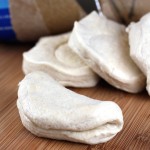
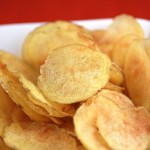
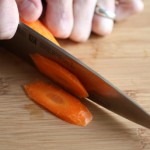
That is an interesting method. The bread has a nice texture.
Cheers,
Rosa
What a lovely idea! My oven and I are not friends during the summer, so this is awesome. I like how you experimented with it again for a fuller, more bread-like flavor.
But I just realized I don’t have a microwave anymore. In any case, I’m going to try this one day. =)
i have to try this!
What a great discovery, and a fun process to boot!
Fun recipe! I’ve never made my own English muffins, but I certainly remember one of Julia Child’s TV shows where she did it (in one of her programs subsequent to the French Chef). This looks really interesting! BTW, since you said this originally was a James Beard recipe, I figured it came from Beard on Bread. I checked my copy, and yup, it’s in there. Anyway, I’m definitely going to be giving this a try. Thanks so much for introducing me to it.
I absolutely adore English Muffins. I have a friend who I used to see often, and we would order Eng Mufs and Hot Choc when we were together. I’ve never made English Muffins before…I first have to get the correct ingredients, such as buttermilk and wheat flour.I can hardly wait to bake this…plus my kitchen is already like an oven without turning the oven on. Thanks for sharing the recipe!
You can’t beat six and a half minutes of baking especially with this summer heat. Thank you for sharing this idea of micro baking English muffin. Enjoy the rest of the week, Carolyn!
This is amazing…I would never thought in baking/cooking bread in microwave…I will sure give this a try…
Thanks for sharing this recipe Carolyn and hope you are having a great week 🙂
What a great idea! I love finding surprising uses of the microwave and making bread definitely qualifies and since we can’t get good english muffins here I’ve been dying for a proper eggs benedict.
Wow! It looks so delicious I can’t believe it’s from a microwave! I hardly ever make things in the microwave, just to heat things up, maybe I should really use it more..
I’ve made this before and it is SO GOOD. Gotta love those nooks and crannies in loaf form!
This is a brilliant concept because fresh bread (which me and my boyfriend love to make) takes forever! You always have to plan way way in advance to get the starter going and bread risen properly. I will most certainly be trying this one out!
oh my! I would never even have dreamed of microwaving bread! But you’ve now changed my mind!! haha.. Yeah, this seems a lot easier than making the bread the traditional way!! Great recipe!
Really? Microwave English Muffin Bread? I’m so there!
imagine the glee the person who figured this out experienced when she pulled it out of the microwave for the first time. 🙂
Sounds like this recipe is made for me! Final picture (the cover photo) looks amazing. Really, microwave? Wow!
Question on the amount of buttermilk, Carolyn: 1 1/2C = 12 oz., yes? So which measurement is correct? This does sound entirely wonderful and I am planning to give it a try as soon as I refresh my sure-to-be stale yeast supply. Another great find from you! 🙂
Carroll: Thank you for your eagle eyes, as always. You are correct. It is 1 1/2 cups or 12 ounces of buttermilk. The recipe above has been changed to reflect that.
Wow, this is amazing! The first time I see a bread recipe for microwave. I am definitely trying this one!
I made it! Delish! I had a 3 cup dish, so I made half of the amount, but it turned out that it still needed 6 1/2 minutes. The bread was really good! We finished almost all of it for brunch. It’s really amazing that one can make bread in microwave in minutes :-). Thanks for the recipe! I guess potato chips are next.
Carolyn, This English muffin bread sounds wonderful. Next time I go to the store I’ll have to get powdered buttermilk as my Mother always kept it on hand in the frig for those special recipes. I hope that you had a wonderful Christmas.
Sounds good, I’m going to try this. Funny, that is the exact same Microwave I have. So I know this will work for me.
Pingback: James Beard’s English Muffin Bread | Diary of a Tomato
Hi I am in Australia can you please tell me what is Baking Soda. We have Bi-Carbonate of Soda and Baking Powder.
With thanks
Hi Mary: Hopefully this helps explain the differences: http://en.wikipedia.org/wiki/Sodium_bicarbonate#Difference_between_baking_soda_and_baking_powder
I’ve been making this for years! I make several loaves and keep them in the freezer. I like to cut slices the long way, toast them, cut them into cubes, dehydrate them, and make them into Bread Pudding. It’s just divine; toasty cubes of english muffing with a lovely pudding.
Lovely idea! … Now, can you toast them in the microwave too, so the range can stay cool all day?
Houseboatonstyx: I don’t know if the microwave can yet do that. But it would be great if it did, wouldn’t it! 😉
Pingback: 26 Ways You're Not Using Your Microwave To Its Full Potential – Viraltor
Pingback: 26 Ways You're Not Using Your Microwave To Its Full Potential - Epik Ara
Pingback: 16 exquisitos platos que no sabÃas que podÃas preparar en tu horno microondas | Actualidad + Tendencia
Pingback: 16 Exquisitos Platos Que No SabÃas Que PodÃas Preparar En Tu Horno Microondas
Pingback: What To Do With Leftover Holiday Buttermilk? | Food Gal
Why do some English Muffin bread recipes cook the bread at 50% power for a few minutes first and then at full power to finish?
Barbara: I am not sure about that. Maybe for a slower rise? Anybody else want to venture a guess about this?
Pingback: Eight things the Wine Curmudgeon is doing during the duration (sort of wine related)